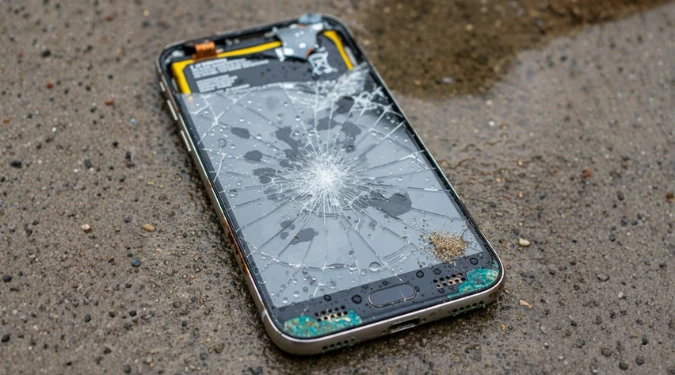Can a water-damaged phone be repaired without losing data? In many cases, yes, but it depends on how quickly you act and how severe the damage is. Water can corrode delicate circuits and damage storage components, but timely care, fast water damaged phone repair services, and the right approach can improve the chances of both repair and data recovery.
How Water Damages Phones?
When a phone comes into contact with water, it seeps into the ports, battery area, and motherboard. Moisture creates short circuits and causes corrosion on the metal components. In more severe cases, the liquid reaches the storage chips where personal data is held, making recovery far more difficult.
Quick water-damaged phone repair is vital. The longer the phone stays wet, the higher the risk of irreparable data loss.
Immediate Steps After Water Exposure
The best chance of recovering data lies in your very first actions:
- Turn it off straight away to avoid an electrical short.
- Remove the SIM card, case, and accessories to prevent further trapping of moisture.
- Dry gently with a cloth rather than using heat, which can worsen the damage.
It is important not to charge the phone or press random buttons during this stage. The goal is to minimise further harm until the device can be examined.
Is Data Recovery Always Possible?
Whether you can recover data depends on where the water damage occurred. If the storage unit (commonly the internal memory chip) is intact, there is a strong chance of retrieving files even if the rest of the phone stops working.
If, however, the storage chip itself is damaged, recovery becomes more complicated and may require advanced technical processes. In rare cases, the data may be lost permanently. Hire professionals for efficient mobile phone data recovery services.
Professional Repairs vs. At-Home Fixes
Basic drying methods, such as leaving the phone in a cool, ventilated space, may work if the exposure was light. But heavier water damage often needs professional intervention.
Experts can clean corrosion, test components, and sometimes transfer storage chips into working devices to extract data. Attempting this at home usually carries risk since delicate parts can be accidentally destroyed.
Still, it is possible to take preventive steps immediately so that experts have a better chance. Acting quickly to turn off, dry, and store the device safely until checked is often the difference between saving and losing data.
Importance of Backups
Even though data can often be preserved after water damage, relying solely on repairs is not a safe habit. Regular backups on secure storage or the cloud remain the surest way to protect photos, contacts, and documents.
Accidents are unpredictable, and not every component survives exposure. Treat water damage recovery as a helpful possibility, but do not rely on it as a primary safeguard.
Long-Term Prevention
Avoiding water damage in the first place is the best solution. Keeping your phone away from bathrooms, pools, or cooking areas lowers the risk dramatically. Using waterproof pouches or protective covers when near water further improves safety.
Even devices advertised as “water-resistant” have limits. They may withstand splashes but not full submersion, and their seals weaken over time. Treat all phones as vulnerable and avoid unnecessary risks.
Final Thoughts
A water-damaged phone can often be repaired without losing data, but success depends on both the speed of response and the specific damage location. If the storage unit survives, files are usually retrievable even if the device itself fails. However, a delay in action reduces the chance of recovery.
In the end, prevention and backups remain the strongest protection. Repair and recovery may save the day when an accident happens, but being prepared ensures that water damage never means permanent data loss.
Hire iRepair Experts in case of quick and immediate water damaged phone repair services. We are your partner in helping you save your phone and data. Trust our experts for quality mobile phone repair and data recovery services.



Leave a Reply